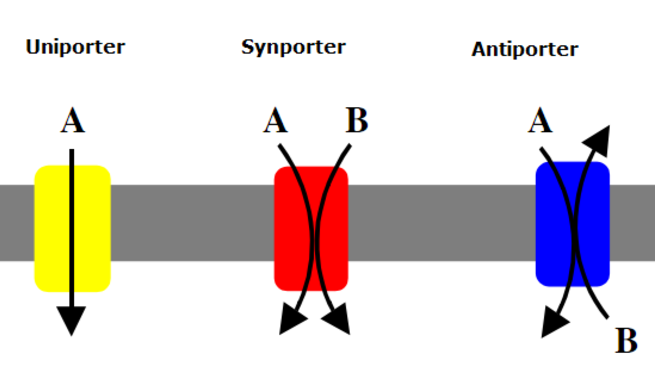-
Symporter
A symporter is an integral membrane protein that is involved in the transport of many differing types of molecules across the cell membrane. The symporter works in the plasma membrane and molecules are transported across the cell membrane at the same time, and is, therefore, a type of cotransporter. The transporter is called a symporter, because the molecules will travel in the same direction in relation to each other. This is in contrast to the antiport transporter. Typically, the ion(s) will move down the electrochemical gradient, allowing the other molecule(s) to move against the concentration gradient. The movement of the ion(s) across the membrane is facilitated diffusion, and is coupled with the active transport of the molecule(s).
-
Antiporter
An antiporter (also called exchanger or counter-transporter) is a cotransporter and integral membrane protein involved in secondary active transport of two or more different molecules or ions across a phospholipid membrane such as the plasma membrane in opposite directions. Na+/H+ antiporters have been reviewed.In secondary active transport, one species of solute moves along its electrochemical gradient, allowing a different species to move against its own electrochemical gradient. This movement is in contrast to primary active transport, in which all solutes are moved against their concentration gradients, fueled by ATP.
Transport may involve one or more of each type of solute. For example, the Na+/Ca2+ exchanger, used by many cells to remove cytoplasmic calcium, exchanges one calcium ion for three sodium ions.
-
Symporter (noun)
An integral membrane protein involved in the movement of different molecules or ions in the same direction across a phospholipid membrane.
-
Antiporter (noun)
A cell protein that acts within an antiport to transport different molecules or ions across the membrane in opposite directions

